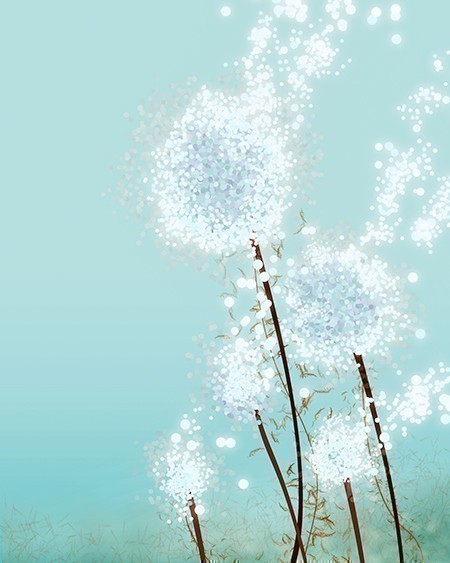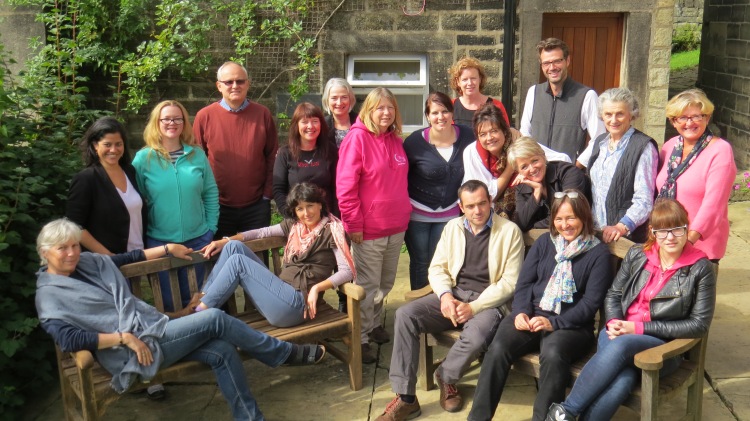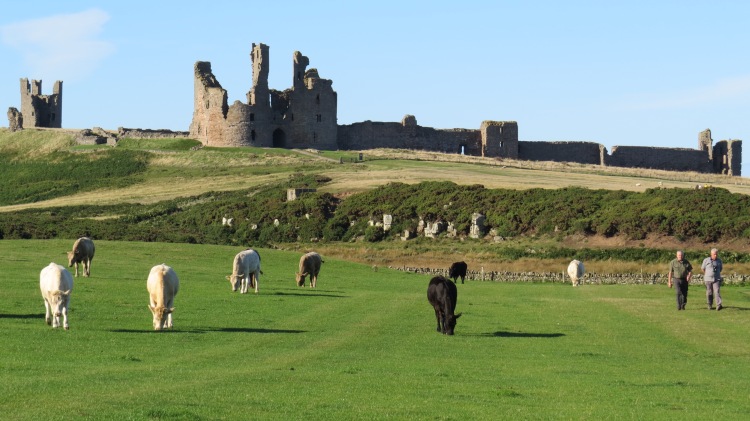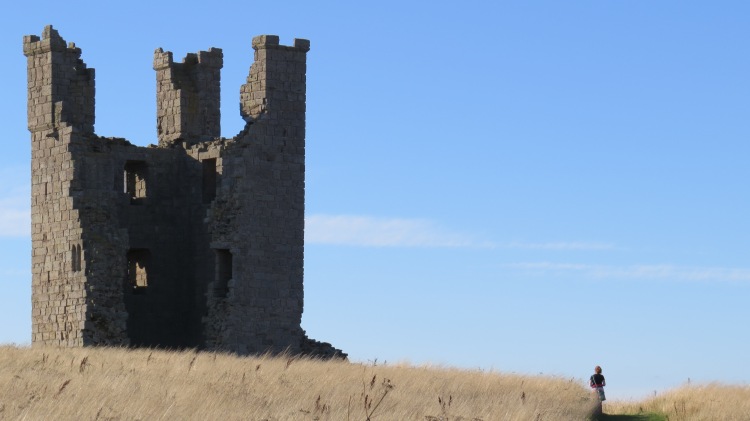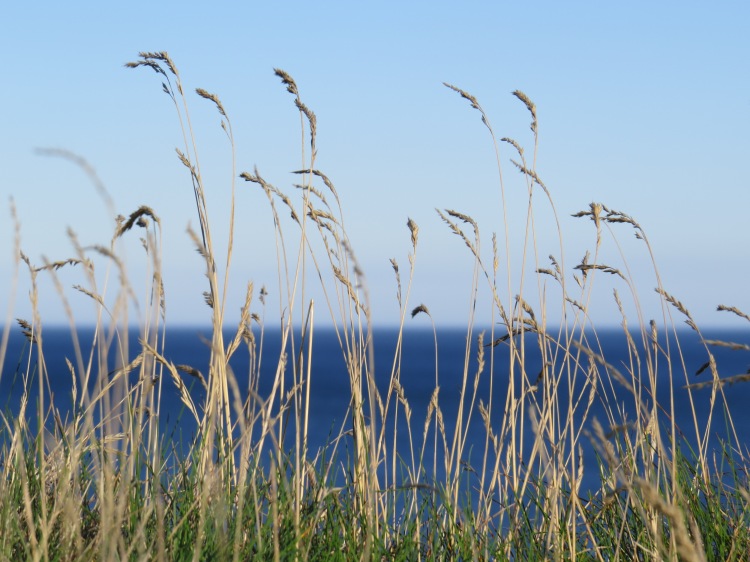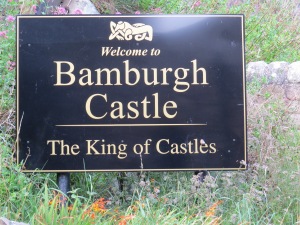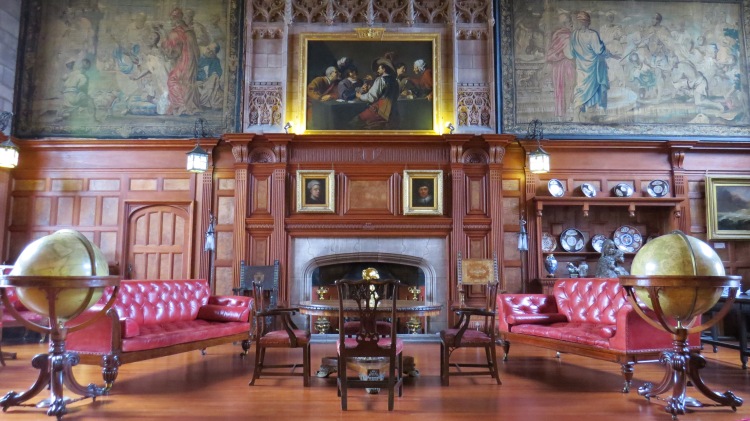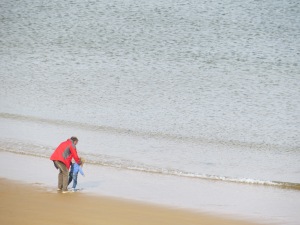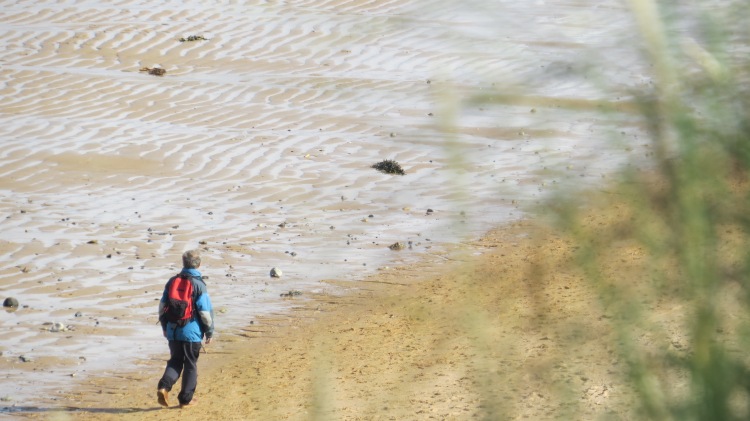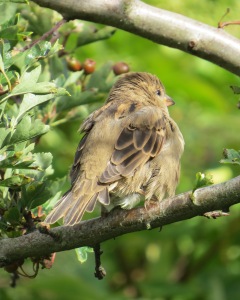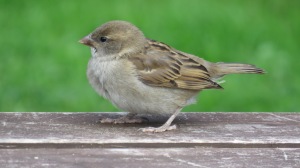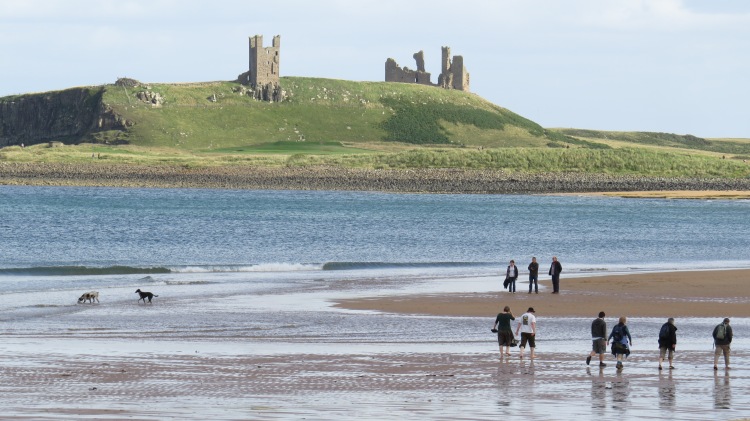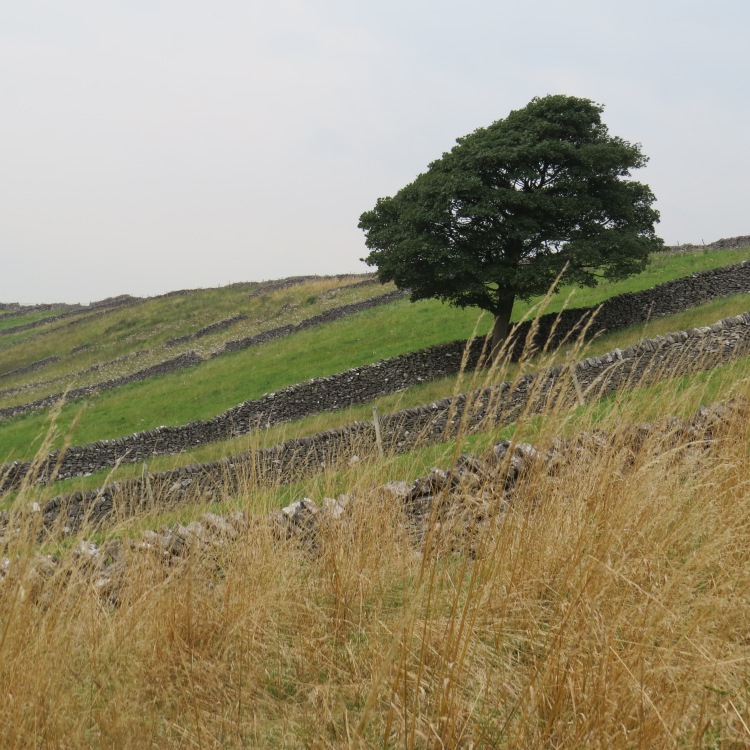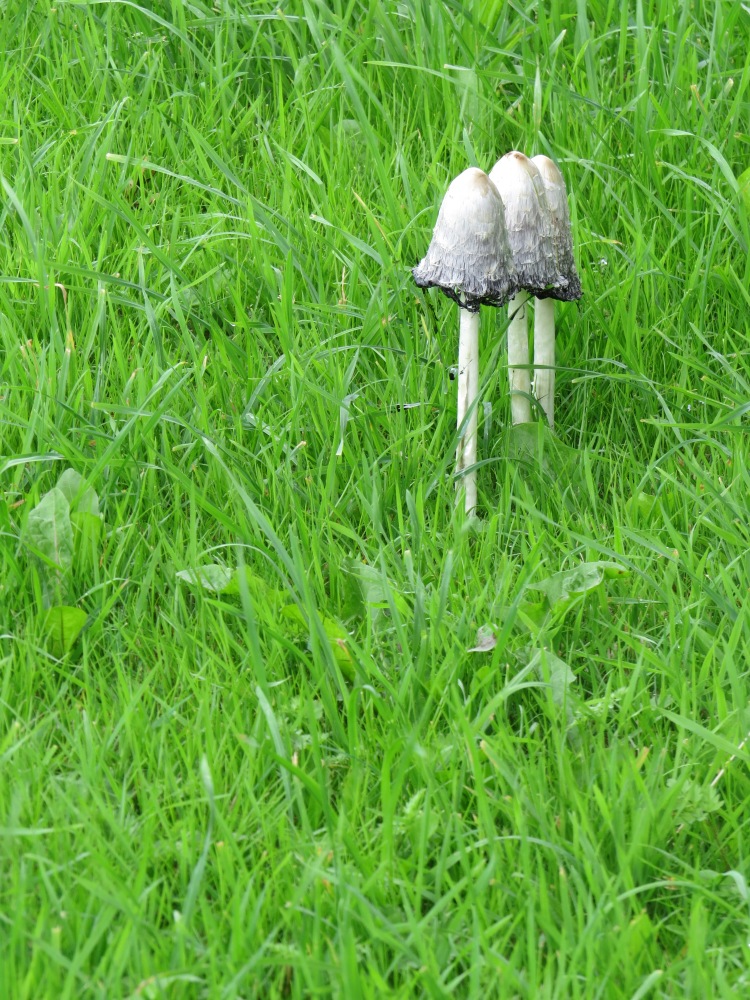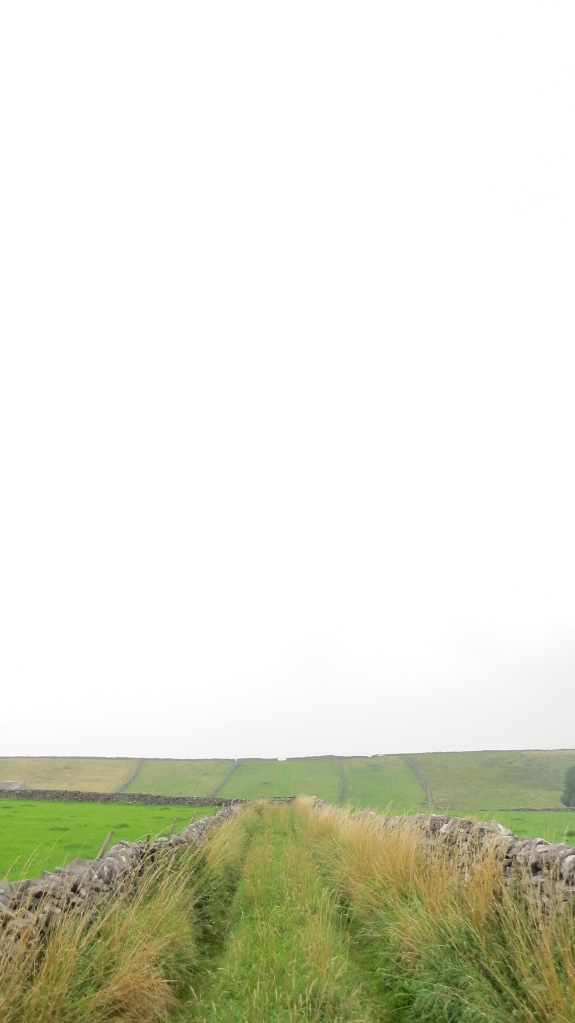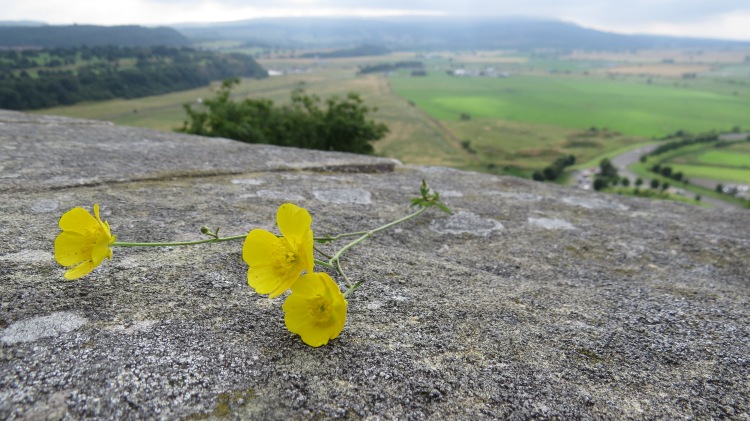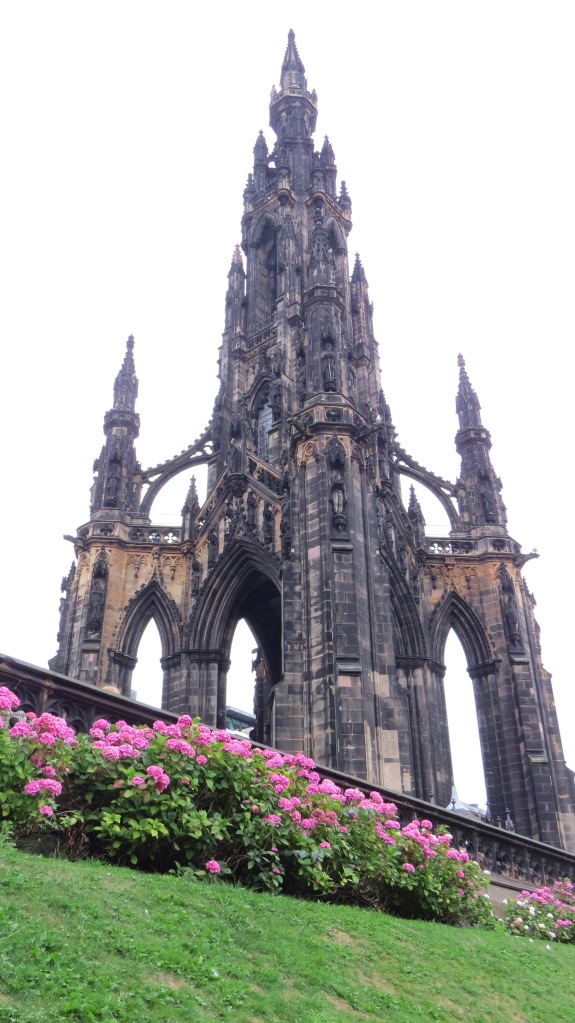Character sketches: Writers retreat

Character #1
Character #2
Character #3
Character #4
Character #5
Character #6
Character #7
Character #8
Character #9
Character #10
Character #11
Character #12
Character #13
Character #14
Character #15
Fremolition
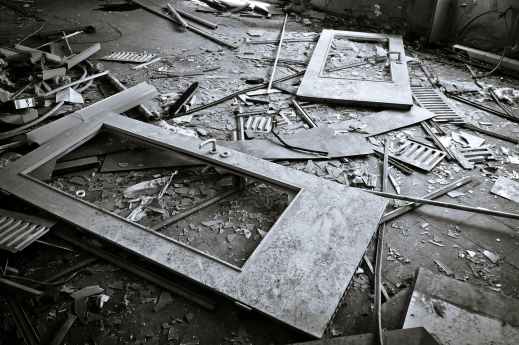
Last week I shared two new words I made up:
Today, based on the words friend and demolition, I present fremolition. It refers to the demolition of a friendship through a particularly ruinous act. Friend says something nasty about your kid? Fremolition. Friend steals from you? Fremolition. Friend betrays a confidence? Fremolition.
Have any of you ever committed or been on the receiving end of a fremolition?
Amazing the turn a day can take
I was part of the small group being sent to the principal’s office. The corridor was quiet but for our buckled shoes on the cement ramp. A head shorter than my peers, I struggled to keep up.
This was a moment. I knew it, even then. I held my exercise book, full of red ink, firmly against my chest. I’d never entered Mr Sneddon’s office before, not in all my two years and three months at Edgemont Primary School. Sibongile was there all the time, and he led the way.
Amazing the turn a day can take. Things had begun decently, with Carin and I working on an Afrikaans skit we would present to the class. I was pleased to be paired with her, not just because we were friends, but because she had an Afrikaans mother, so I knew she had the language chops to carry me through. I had, as expected, stuttered my way through the presentation, but I was pleased at the end of it all to note my performance hadn’t been the worst.
In art class my flowers had turned out well. Mrs Swart said she loved the “intensity” of my colours. Whatever that meant. But she said it with a smile. And then, when I was digging in my desk looking for my maths book, I found a pocket-size Chomp I’d forgotten about in the back left corner. Keeping the desk’s lid resting on my head, I was able to scoff it right in the middle of class! And at Big Break I’d run up to the area near the foyer clutching my R5 note and managed to get the very last hot dog. I’d wanted two, but you really have to hustle on tuck shop day.
So things were going respectably well for me. But a shift in gear was now taking place.
We entered the reception area, three girls in simple blue smocks and two boys with white shirts tucked into grey shorts. Mrs Brink led us into the principal’s office. It smelt the way old people smell. “Students from Std 1R. For you to see their spelling,” she said, her hand bending in our direction.
She exited.
“Sibongile, young chap,” Mr Sneddon said, stretching out his hand for the exercise book. The two managed a deft exchange of the book so that it fell open to the page where my classmate had kept his finger. I quickly tried to find the right page in my own book and adjust how I held it so I could perform a similar feat.
Mr Sneddon glanced at the page, reached without looking for his stamp, and bashed it onto the ink pad then the book. He closed it and handed it to Sibongile, saying, “Twenty out of twenty. Again! Excellent work, Sibongile.”
I stood there, statuesque in my self-containment, full of the glory to come my way. I also had 20 out of 20! This was indeed a moment.
Happiness is an awkward mackintosh
Happiness is an awkward mackintosh on me, lopsided, with the front sliding up to my neck. I wear it experimentally, stretching my arms out often to see how it looks. I wonder if passersby see that it’s new.
Red traffic light
He’s unstable on his feet. I watch him retrieve something from the ground and struggle to straighten up, two metres away from me and existing in another world.
The traffic light has just turned red, so I must idle. My window is open a crack, and I press the button to close it. He’ll come to my window, of course, and I’ll take no action, just as I’ve been told by those in the know – who’ve visited the shelters. I tighten my core, yet outwardly I’m another bored commuter hidden behind large shades.
The ground is purple with crushed jacaranda blooms, and I worry he could slip. I’ve been mincing my own way through mushed flowers the past few weeks.
Following rejection at the side of the blue Peugeot in front of me, he approaches my window, and holds up his good hand, cupped. I give my tight smile and head shake, then look ahead. He usually doesn’t persist, but today he lingers. I suck in my lips and don’t respond.
I watch his progress to the next car in my rearview mirror, relieved and depressed, the banter of the Drive Time team tugging ineffectually at my thoughts. The sun highlights the cavity in the right of his head, and I look at it a while. In a bid at comfort I once conjectured that it was the result of a fight – that his was a violent life. In the end, I felt sunk regardless.
As he reaches the fifth car, the Peugeot is off in a burst of exhaust, and a moment later the light turns green. African time doesn’t exist on the roads. I’m not in gear yet, and the car behind me hoots – loudly. I climb up and around the corner, eager to reach the highway, eager to think of other things, eager to put the windows down and have the wind dry my face.
Every Choice Matters: Good Source Brings the Zero-Waste Life to Durban

Low-angled sun pours in through the shop front window of Good Source, but it doesn’t quite reach my ankles where I sit deep in the store at the wood coffee counter with one of the owners, Kim Brennan. We are sipping iced coffees through metal straws, chatting about the store’s zero-waste vision. Good Source is a plastic-free, organic, local produce grocery and coffee shop.
Kim (the brunette in the above photo) says that the owners, a small group of friends, began the store out of a desire to enable people – including themselves – to shop plastic-free. Amazingly, they all have other full-time jobs, making this a “passion job”, in Kim’s words.
The store, which opened its doors in October 2018, has a clean, industrial aesthetic that is softened by natural materials here and there. Industrial-inspired lights hang from the ceiling alongside ones with rattan shades; warehouse-style stands have pale wood shelves; and the black-and-white logo and framed pictures are offset by straw baskets. My favourite touch of all is two branches that have been upcycled by a local crafter into simple and stylish mobiles – each has a dozen strings hanging from it, and each string ends in a series of fat, earth-coloured beads.
Glass jars with name tags line the shelves, each filled with a particular coffee bean, grain, pulse, sugar, oil or vinegar. Customers are encouraged to bring their own containers for decanting, but there are also Mason jars and paper bags available. Loose vegetables sit in baskets, while all the sauces, pickles, spreads and preserved foods come in glass or tin, both of which can be recycled ad infinitum. Fabric items, says Kim, like loofahs, shoppers and straw sleeves are made from linen, hemp or cotton, which are biodegradable.
When I ask Kim to tell me what makes their store different, she says: “Our key thing is to reuse, reuse, and reuse again.” I later realise this is the company’s catchphrase, as I see it printed on the bottle of water I took out of their fridge.

One better than recycling
Kim, according to fellow store owner Nicole Benders (middle blonde), who joins us at the coffee counter, is a “purist” – someone not satisfied with just recycling, but wanting to step out of the waste chain altogether. Kim, a wife and mother of three, aims to live a zero-waste life, and is excited that with Good Source it is finally becoming possible.
The company only buys from suppliers committed to the same vision, which is how the store got its name: Good Source. It has been a struggle at times, the ladies tell me, to find locally based suppliers committed to zero-waste practices, but Kim is encouraged to see suppliers becoming more and more aware of their waste and making changes so that they can partner with Good Source. Suppliers of grains, coffees and sugars use cotton zip bags that the store can return to them, and other suppliers use buckets that can also be washed and returned to them for continued use.
Every little choice matters
When I ask Kim for advice on plastic-free living for the newbie, she advises focusing on the things you use the most, which are generally bathroom products like shampoo, conditioner, shower gel and toothpaste. Good Source sells shampoo, soap and conditioner bars, and toothpaste that can be decanted. Bawthroom plastics are among the worst, according to Kim, because not only do most come in single-use plastic containers, they also contain microplastics that get washed down the drain. Microplastics, which are plastics shorter than five millimetres, are a serious environmental hazard.
Another bathroom ‘nasty’ is disposable razors. Lindani Shozi, the barista behind our refreshing coffees, has eco-consumerism in his blood; he tells me he uses the steel razor passed on to him by his grandfather. This means only the razor blades ever need replacing. As the slogan emblazoned on the shop window states: “Every choice matters”.
One of the joys of working at Good Source, according to Nicole, is seeing the light come on in customers’ eyes as they learn about eco-consumerism and the changes they can make to their habits. The store’s owners regularly see newcomers try out a toothpaste, then return a month later with their shopping bags, wanting to switch to more plastic-free options. They also often buy gifts to convert their families and friends. The step-by-step progress that the Good Source staff see individuals making en- courages them in their mission.
A shop for everyone
The biggest challenge to people going waste- free, say Nicole and Kim, is lack of availability. They are apparently the only ones in the area doing this. They have customers who travel a great distance to shop with them. “People drive for over an hour and do a fortnightly shop here, because they believe in the cause,” says Kim. An hour’s drive for groceries is staggering – Durbanites are known for avoiding long drives, and I have never heard of anyone doing such a thing before. Many people clearly want to shop responsibly. There is a very real groundswell in eco-consumerism taking place in South Africa.
While I am not surprised to see a barefoot young girl in a long white dress come in to buy kombucha, Kim tells me that their target audience is very definitively “everyone”. Good Source is not a health store, stocking red meat (hormone-free, of course), cheeses, sugars and chocolate. The primary focus of the store is to enable people to shop plastic-free, so they want everyone to be able to buy what they need.
I also like Kim’s advice to “cut down on convenience”. It a is wonderfully countercultural statement. She gives the example of chopped butternut, which is sprayed and then put in a plastic bag. Kim says it is better to buy a whole butternut, and I have to agree – when did we become so averse to chopping vegetables? Slow cooking is not only good for our hearts and minds, but also for the planet.
Future plans
The Good Source team is also enthusiastic about running workshops to help empower people, from cooking demos to tutorials on how to go waste-free. In the future they hope to expand to other parts of Durban as well as South Africa to allow more and more people to choose waste-free shopping and lifestyles.
The more Kim and I talk, the more I realise the extent of my own plastic waste, and am inspired to start down the road towards more thoughtful and earth-friendly purchasing habits. I walk out of Good Source into the pale evening with a newly bought charcoal water purifier stick, ruing the plastic water filter I recently bought. “Education is the most powerful weapon which you can use to change the world,” said Nelson Mandela. How very true.
–
Website: http://www.goodsource.co.za
Instagram: @goodsourcesa
Images in the post are courtesy of Good Source SA.
Please note that this isn’t a sponsored post – I approached Good Source after hearing about them and thinking they would make for an interesting article. Thank you to Kim and the rest of the team for being so friendly and helpful!
querious

I’ve combined the two words curious and query to form an entirely new word: querious. It refers to those times when someone tells you about something new or strange that is so interesting you can’t stop asking them questions to learn more.
Please feel free to go ahead and add querious to your vocabulary 🙂
Postcards and office cubicles
From the archives, but rewritten …
~
Carin stared at the wall of her office cubicle, and the pinned up postcards from Mongolia and Bhutan jeered back at her. She could have been there right now, with muddied boots and a backpack, or developing her horse-riding skills on an empty plain. But since she’d said no, Derek had said farewell to her as well as to everyone else and gone alone. Meanwhile she sat where she had sat for the past nine years, possessing a comprehensive insurance plan, and ready to scream.
Carin sat up straight in her chair so she could peer over the divide and see the rest of the room. Her desk was one of five and was positioned in the corner furthest from the entryway, so she had a clear view of everything. When bored, which was often, she would survey the small week-based world she shared with four female colleagues.
Tamryn, who was just 22, was at that moment rifling through papers in a cabinet drawer in an important fashion, so Carin knew she had no clue what she was doing. Janette was standing by the fax machine, wearing a blank stare and fiddling with her nose ring. Faith was not at her desk, but then Faith was never at her desk. Carin had great admiration for Faith. Finally, if she looked left, Carin could see Sonya in the opposite corner. Sonya had turned 50 yesterday but had the joie de vivre of a five year old. She was presently punching away at the keyboard with her two index fingers and humming to herself.
Carin slid back down into her chair. She put her feet up on the windowsill and considered the sky.
She had ended up staying with the company longer than anyone expected. She would have had her own office years ago if she hadn’t kept moving departments. But changing around within Sutton Ink was her way of shaking things up in life, without ever actually shaking anything up. Right now she was in logistics.
It was 11:50am and Carin had a busy schedule of nothing much to do.
She decided she may as well make her way to see Sean on the ground floor. One of the more tolerable tasks of her new position was that twice a day she had to go down to deliveries to hand over and then later collect paperwork from hairy-armed Sean. She appreciated the legitimate break from not only her desk but also her landing. If anyone whinged about having come to speak with her and not finding her at her desk, she could say, “Oh really? What time abouts was that? Ah, I was probably downstairs at that moment doing paperwork with Sean. So sorry about that.”
The logistics department was on the third and top floor at the back of the building. Carin could see out the window down onto the trucks in the loading zone directly below. There was a stairwell just twenty feet away that would lead her straight down to Sean’s office, so she could be there and back in a minute flat.
She walked towards the stairwell but at the last second swung left, having recollected that she had a question to ask Shona Hartley in marketing (a department on the second floor at the front of the building). It was an urgent question, able to make or break the company, both locally and internationally. But by the time she reached Shona’s door she’d forgotten the question. So she went in, sat down, and said, “How did Molly’s vaccinations go yesterday?”
Ten minutes later Carin meandered through the second floor back towards the stairwell leading to Sean. If you’d asked her how, she couldn’t have explained it, but her route somehow took her past Khosi, who worked in the call centre. Right then Khosi sat with the phone lodged between her ear and shoulder, hands gripping her armrests. Carin slowed down enough for them to exchange a sisters-in-arms fist bump as she passed. The air was thick with Fire and Ice, and Carin caught sight of the slender red and black canister on Khosi’s desk. She knew the deodorant was there to freshen the air after phonecalls with odious customers. The air frequently contained toxic levels of freshness.
While paper-towelling her hands in the second-floor bathroom and checking in the mirror for any wrinkles around her eyes, Carin realised she hadn’t actually brought the papers for Sean with her. She went and fetched them, then walked down to see Sean, stopping by the first floor on the way to steal milk and sugar from the bigwigs’ kitchenette.
Sean was standing outside his office. He smiled when he saw her, bumped her arm with his elbow, took the papers, and said, “All good.”
Twenty minutes after she had first stood up, Carin shambled back to logistics. She deposited her stolen edibles in the little logistics kitchenette and made herself a plain black coffee, then went and dropped into her chair. She proceeded to stare sourly at the postcards on her cubicle wall. Last she had heard he was living in some small Bhutanese village with a name nobody could pronounce. He didn’t write much on those postcards; his scrawl was hurried and loose. He was clearly doing well. He was doing very well, the handsome, saintly scumbag.
Carin turned her head to look out the window at the massive 70s-era block building that pushed down on the earth on the other side of the parking lot. She knew it was the twin of the building in which she presently sat, and had been sitting in for a third of her life. She tried to erase the thought, since counting up years and fractionalising her life only ever led to a tray of lasagne and a large bag of chocolate-covered mints while watching cheap reality shows. But that afternoon her inbox was empty, her desk was all perpendiculars, and there wasn’t any work worthy of a sentient being, so the thought of all her joyless years in that brick mausoleum wouldn’t go away.
Carin looked longer than usual at the wild open spaces portrayed on the postcards in front of her, the number 1/3 like a watermark across her vision. “First-rate baboon,” Carin said to herself. Blinking a long blink, she saw herself wearing muddied boots, a walking stick in hand, and Derek’s sun-ripened face a part of each new scene. There were no open windows in the office, but Carin could feel her fears of the unknown being tugged at by a cold and determined Himalayan wind.
It was night time, I was a woman alone, and I went to investigate the unknown noise in my aubergine flannel jumpsuit
I was drifting off, then my leg jerked upwards and I was awake. Why was I awake? I lay static, trying to figure it out. Then I heard a prolonged scrape, and I knew it was a repeat sound.
I shimmied out of bed and mashed my feet into the loose piles of thread I call slippers. I went out to the landing, put an arm across my chest, and trotted quietly down the staircase.
Rr-eei-k.
There it was again. Coming from the kitchen. A shaft of light from the front door transom bisected the central living area. I zigzagged between the closely packed furniture to reach the arch leading into the kitchen.
I flattened myself against the wall alongside the arch, then poked my head around the edge. It struck me as a Charlie’s Angels sort of move, and if I hadn’t been wearing aubergine and starting to sweat I would have rather enjoyed the moment. I saw nothing.
There it went again. Rr-eei-k.
I dropped onto all fours and crawled into the kitchen. As I passed the sink I stretched an arm upwards and felt gently for the peanut butter-smeared knife I knew to be resting on the edge. Whiffy weapon in hand, I edged forward to the far window, my knees bruising as they pressed against the unforgiving tiles.
I reached the window. It started two feet above the ground. I looked up at the thick yellowed netting that served as a curtain. It was there when I bought the place, and I hadn’t got round to changing it. Sliding my head under the netting, which hung a few inches below the window’s lip, I inched up to peer outside. A pair of eyes stared straight back into mine and I choked on air, my eyes welling up from the reaction.
I stood up and yanked the window open. Samuel – at least that’s the name I used for him – barely blinked. There was a complete composure to him, as always, and I thought about shoving him off the ledge.
We stared at each other a moment longer, then finally I said, “If you want to live here – fine. But for this, you’re getting neutered.”
A rose for secrecy (design history)
This is a ceiling rose:
It’s now just an interior design accessory, used in many homes to beautify the ceiling and often cheaply made from materials like polystyrene. But the origin and early days of the ceiling rose are more interesting than you would think.
As far back as Roman times the rose was associated with secrecy. When the Romans withdrew from Britannia, the association of the flower with secrecy remained in the minds of the people. This at least appears to be the case, as in mediaeval England a rose would be suspended above a meeting table as a symbol of free speech and confidentiality.
 In Tudor and Jacobite Britain, suspended roses were replaced by stylised roses constructed into the plaster of the ceiling above a meeting table. These were dangerous times, with charges of treason leading to execution, so confidentiality was key. The term sub rosa (literally ‘beneath the rose’) means ‘in secrecy’, so when a sub rosa meeting was called the attendees would go to the house where a ceiling rose existed and have their clandestine meeting.
In Tudor and Jacobite Britain, suspended roses were replaced by stylised roses constructed into the plaster of the ceiling above a meeting table. These were dangerous times, with charges of treason leading to execution, so confidentiality was key. The term sub rosa (literally ‘beneath the rose’) means ‘in secrecy’, so when a sub rosa meeting was called the attendees would go to the house where a ceiling rose existed and have their clandestine meeting.
The practical significance of the ceiling rose was lost over time, but the decorative element remained, with elaborate and finely crafted ceiling roses becoming particularly popular in Victorian England.
Today’s Google image is of William Tell – who was he?
Today’s Google pic looks like this:
Who can see an image like that and not be intrigued?
Briefly, William Tell is a Germanic folkloric character who was forced to shoot an apple off the head of his son because he (the father) had failed to bow in respect to a hat placed on a pole by the newly appointed Austrian reeve, Albrecht Gessler. (Other people’s children, hey?)
William of course managed the feat (he strikes me as being the German equivalent of Robin Hood – a stupendously gifted marksman having to deal with a ridiculous, power-crazed little overlord). Legend has it that William drew two arrows before shooting, because if he failed and hit his son he planned to use the second on himself.
Here’s a 1554 rendering of the legendary scene (notice His Excellency the Hat on the pole next to the ghoul-eyed son):
~
Running to lose yourself, or is it to find yourself?
Nothing was to be heard, only the steady plea of the wind across the moor and the susurrus of the grasses closest to me. I knelt down on one knee, intent on listening to this raw environment but also needing refuge from the wind. My fleece was zipped up to my chin, and I could feel cold sweat sliding down my neck.
I had left the sheep farms well behind me to follow a path of heavy slabs that led across the crown of the mountain, past a line of lambing shelters and then on towards what appeared to be nothing but past-prime heather and dirt blending into mud. Tiny raindrops started to settle themselves onto my face as I knelt, but I didn’t turn back. This place – this rough expansive place that belonged entirely to me in that moment – was a place I wanted to store within me. I couldn’t rush it.
So I hovered there for insensible minutes, knowing it would all have to last me a very long time.
~
Megan’s UK diary: Ted Hughes Arvon Centre, Lumb Bank, West Yorkshire. The art of life writing.
Life writing is simply what it suggests – writing that is rooted in the experiences of real life, whether biography or memoir, or something akin to that. One of the best things I discovered through my week-long residential course at Lumb Bank was the clarity and authenticity that life writing afforded me in the story-telling process.
Lumb Bank was originally built by a mill owner in the C18th. Eventually Ted Hughes bought it, and his wife, Sylvia Plath, is buried in Heptonstall, the hilltop village less than a mile away.
This area of West Yorkshire is full of hills and dales, tight lanes, moors and forests, sheep farms, abandoned mills and steep villages.
During an Arvon residence course, which takes in about 17 writers per course, you take part in morning writing workshops, cook one meal (in team), attend evening readings, have one-on-one tutorials with the two published authors leading the course, and still have free time in the afternoons to write, gaze at the abandoned mill, chat in the garden, concoct plum-based mulled wine, and, in my case, hop up and down over every bunny spotted on the lawn and then go get lost on the moors.
We were an eclectic bunch, ranging in age from 20 to 84, coming from England, Ireland, Norway, Bulgaria and South Africa, and presenting a mix of personalities and perspectives. As a group, I imagine it could easily not have worked, and yet it did. It really did. The success of it had something to do with all the hours spent around the diningroom-cum-workshop table where we got to know each other through conversations as well as through each other’s writing. We laughed hugely (sometimes we downright crowed), occasionally we gasped, and also occasionally we cried, because, well, this was a life writing course, and life isn’t always neat or pretty.
Here are the lovely and talented writers that now make up the group Subtext:
Megan’s UK diary: The past glory of Dunstanburgh Castle, Northumberland
That is why I love England. It is so little, and so full, and so old.
– Robert Speaight
Dunstanburgh Castle is a massive ruin on a headland of the Northumberland coast and is the biggest castle in the county.
Unusually, it wasn’t built near to a village or town, so the only way to reach the castle is by walking across a lovely stretch of about a mile of coastal grassland …
The remains of the massive gatehouse:
This field of gorgeous grasses, of which you’re only seeing part, and which houses a small community of sheep, all lies within the walls of the castle.
Dunstanburgh Castle was commissioned by Thomas, Earl of Lancaster in 1313. Lancaster was the richest and most powerful baron of the day. It was intended that Dunstanburgh outdo the castles of his uncle, Edward I, and cousin, Edward II – a bold move!
This is the Lilburn Tower to the north:
From the Lilburn Tower you can see Bamburgh Castle to the north. Bamburgh Castle was Edward II’s key stronghold in Northumberland. Lancaster’s increasing power and ambitions eventually led to his execution.
John of Gaunt took possession of the castle in the late C14th and did some revamping. In the C15th it was twice besieged during the War of the Roses. Thereafter it fell into disrepair and eventually ruin, but during its heyday it was one of the biggest, grandest and most imposing castles in the land.
Grasses growing on top of the eastern wall …
~
Megan’s UK diary: Summertime, and the living is easy at Newton-by-the-Sea
A poor woman from Manchester, on being taken to the seaside, is said to have expressed her delight on seeing for the first time something of which there was enough for everybody.
(Sir John Lubbock)
These are some photos from my visit to Newton-by-the-Sea in Northumberland.
View from up on the dunes:
You know how folks in the West, when seeing an image of African children playing with a primitive ball on a dirt field or smiling over a slice of watermelon, are prone to say something like, ‘Ah, bless – see how happy they are with so little!’? I must say that travelling around the UK I find myself thinking things like, ‘Ah, look at them little British kiddies making the best of their cold, blustering summers to visit the beach!’
A simple shot:
I like the pattern of the water and the sand in this photo …
In the photo below, it is as though someone thoughtfully placed this lifebuoy up on the hill expressly for the sake of photographers. It’s probably a clichéd pic in the opinion of experts, as it’s reminiscent of an emotional film finale where the fallen knight’s sword is stuck in the ground and the camera gives us a low-angle, sky-backdrop view, so that our hearts might soar to transcendent heights … , but I lapped it up with the freedom of the novice:
Here we have a sparrow. I asked him to show me his right side …
… and then I asked him to show me his left side. (He said he looks good from both sides.)
This puts me in mind of these verses from Matthew 10:29-31:
Are not two sparrows sold for a penny? Yet not one of them will fall to the ground outside your Father’s care. And even the very hairs of your head are all numbered. So don’t be afraid; you are worth more than many sparrows.
Ah, how romantic …
… unless that’s his mother. I really can’t tell.
A view of Dunstanburgh Castle:
More about Dunstanburgh in a future post.
~
For more ‘Megan’s UK diary’ posts, go to The green spaces of Sheffield and Jane Austen & Edinburgh Castle at night.
For other photography posts, go to Edinburgh shows off and Buttercup view from Stirling Castle.
For a history and photography post, go to Haddon Hall (the perfect mediaeval castle & location for Jane Eyre).
Megan’s UK diary: Haddon Hall (the perfect mediaeval castle & location for Jane Eyre)
Two Englishmen, having climbed the Matterhorn, were regarding the wonderful view that stretched before them.
‘Not half bad!’ commented one of them.
‘No,’ replied the other, ‘but you needn’t rave about it like a love-struck poet!’
I thought on this quote, having come across it only that morning, as I strolled around Haddon Hall. You see, Haddon Hall is WONDERFUL, and my thoughts were thus in the territory of superlatives and exclamation marks.
A mediaeval castle in the Peak District, Haddon Hall is a quintessentially Norman building, square and solid, believed to have been built in the C12th. It is a romantic castle, containing everything from the Middle Ages that delights us in today’s world: battlements, very low doorways, a chapel decorated to the hilt, wildly uneven flagstone floors, and I could go on, but you are getting the picture, aren’t you, clever reader?
Moreover, the family who own the Hall, the Manners (it has been in their family since the C16th), has thankfully not gone the common route of restoring it to within an inch of its life. There still isn’t a perpendicular anything, anywhere. Some of the stone steps are curved into almost non-existence in the middle as a result of centuries of footfalls, and the decaying wooden chests and ill-fitted windows have been left alone.
I wish I had the capabilities of the love-struck poet ridiculed by the Englishman above, because the only words that presented themselves to me to describe Haddon Hall were words like lovely, outstanding, amazing, and truly wonderful. Bleugh! The frustration of living in a society where such words are regularly used to describe getting the parking spot you wanted or a tasty sandwich, meaning that when I want to really express that something is special, I can either go with one of them, and sound bland, thereby failing to capture the imagination of a hyperbole-drenched readership, or I can go all Italian and really do risk sounding like an overwrought poet whose been sniffing heavily on deadly nightshade. Not great options either of them.
I will have to satisfy myself with something very simple. I will say that, to the C21st tourist, the castle is perfection.
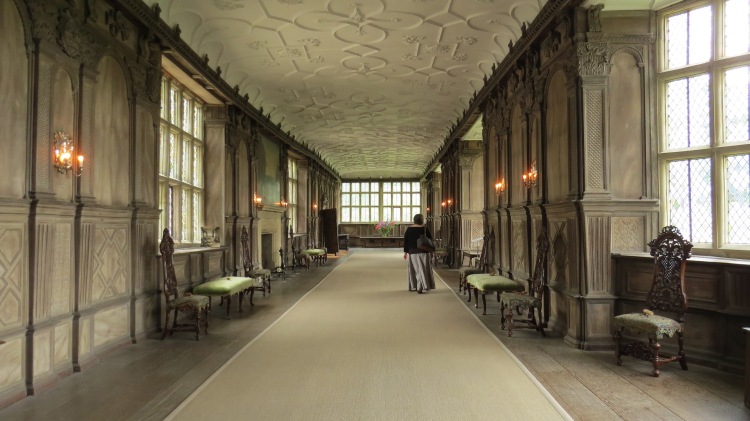
The Long Gallery, with a mom in it. My mom, in fact.
Long galleries, apart from their other uses, were intended as places where residents could find exercise, no matter what the weather. Elizabethan ladies, moreover, didn’t expose their skin or clothes to sunshine, so they could either walk the gallery or I suppose do sit ups in their bedrooms?
Is anyone else put in mind of Bingley’s sister asking Elizabeth to take a turn around the room with her?
The garden was bursting with summer flowers, and as such was delightful in the special way that only English gardens can be. During my visit there were English roses, day lilies, thistles, agapanthus lilies, nasturtiums, yellow daisies, deeply purple clematis, red-and-white fuschia, and too many others to list. It was a garden of every colour.
 One of the most striking things when you stepped out into the garden was the abundance of white butterflies (also called cabbage whites). They were everywhere, as were the bumble bees and wasps. I’ve perhaps never seen such a ‘busy’ garden.
One of the most striking things when you stepped out into the garden was the abundance of white butterflies (also called cabbage whites). They were everywhere, as were the bumble bees and wasps. I’ve perhaps never seen such a ‘busy’ garden.
I also rather enjoyed discovering the Jane Eyre connection with Haddon Hall. The 2011 Jane Eyre film adaptation with Mia Wasikowski and Michael Fassbender (how fussed are we really if Mr Rochester is decidedly good-looking this time round?) had Haddon Hall as Thornfield Hall.
I recognised the little pavilion where Rochester and Blanche Ingram play at keeping a feather in the air, the courtyard where Rochester drags Jane off to the church so they can marry, and the narrow stone bridge that leads to Thornfield Hall. The romance of the castle and its grounds are so well suited to the romance of Jane Eyre – a gold sticker for the film’s location manager, please!
~
For more posts on castles and stately homes, go to:
Megan’s UK diary: Chatsworth House forever
Megan’s UK diary: Edinburgh’s New Town & old maps
Edinburgh’s New Town, which was built between 1765 and 1850ish, is a very orderly, Georgian part of the city, with a grid road system completely at odds with the organically higgledy-piggledy nature of the Old Town. Up until the C18th almost everyone lived squished into the tenements up in the Old Town, as that was the place considered safe from outside attack because it was within the city walls. (Safety from germs, disease and foul smells, however, was not to be found within the walls.)
Only in the second half of the C18th was it finally felt to be safe enough to expand outside the city walls. So the New Town began to be built, and it has since been hailed as a masterpiece of city planning. The wealthier accordingly moved out of the Old Town en masse, helping to thin out that overly populated area.
The Edinburgh Book Festival is a contained festival within the broader Edinburgh Festival, and all talks and discussions are held within Charlotte Square, which is located in the heart of the New Town.
During the Festival Charlotte Square is given over to various tents and these tents house the talks, a coffee shop, and 2 bookshops. A covered walkway surrounds a central grass area filled with umbrellas and deck chairs that each boast a bookish quote, like “Don’t pay attention to her. She reads a lot” and “The only way you can write the truth is to assume that what you set down will never be read”.
I think I enjoyed my first talk the most of the three I attended. It was a presentation by Simon Garfield on “How Maps Define our World” (and I love maps). Coincidentally, the map I know better than any other is the one of Scotland, as when I lived in digs my one roommate (a McGregor) posted a map of Scotland on the back of the toilet room door, so for 5 years my time in there was spent memorising various firths, lochs and Hebridean islands!
One point Garfield made was that maps used to have a more personal edge, revealing conjecture, belief, and worldview. Nowadays they’re about science and accuracy, and as such are rather homogenous. The only ‘personal’ aspect I can find in modern world maps is the placing of one’s own continent at the centre of the map.
In days of yore, however, elephants and ostriches could be drawn to fill in spaces in Africa where nothing else was known, and heaven and hell could be inserted above a parcel of land, showcasing the theology of the cartographer.
Incidentally, California was drawn as an island for two centuries. It is still rather a world to itself at times.
I really enjoyed this modern (but less scientific) map that Garfield showed of London:
~
For other travel posts, go to Lindisfarne: A Holy Island, Wanderlust and the Amalfi Coast, and How to ruin a pleasant morning jog in the bush.
Megan’s UK diary: Sir Walter Scott (the greatest author never read)
It’s hard to get a full-length shot of the Sir Walter Scott Memorial, simply because it is so dang BIG. In fact, it’s the largest monument ever built anywhere to a writer, and stands at 61 metres tall (that’s more than 18 storeys!).
I generally think a single great shot speaks louder and more eloquently than multiple shots, but I wasn’t able to produce any one shot I was completely happy with, so I’ve included this next shot as well, as it better shows the heftiness of the monument …
… while this next shot, I’m hoping, conveys how tall it is …
You can climb all the way up to the very top balcony of the monument by way of an extremely – I stress, extremely – tight stone spiral stairwell. It’s not too bad to begin with, and you can reach the first and second landings fairly effortlessly, but the final two stairwells tested me, and I had to remind myself that I do not suffer from vertigo, dizziness or claustrophobia, all three of which suggested themselves to me.
 The main problem was that the upper stairwells have no windows, and so you’re acutely aware of the numerous tight revolutions of tunnel both above and below you (while being unsure exactly how far above or below you they extend), so there is no quick escape in either direction. That, at least, was my issue, and I’d entered the memorial with nary a concern in my head.
The main problem was that the upper stairwells have no windows, and so you’re acutely aware of the numerous tight revolutions of tunnel both above and below you (while being unsure exactly how far above or below you they extend), so there is no quick escape in either direction. That, at least, was my issue, and I’d entered the memorial with nary a concern in my head.
I’m a little miffed with this picture, which shows the entrance to the one stairwell, as I don’t feel it accurately portrays how narrow the upper stairwells are. The final portion can’t have been any wider than a foot and a half. I seriously think larger folk would come unstuck in that part (unstuck insomuch as they would of course become actually stuck).
The Scott Memorial was built by the Scottish people from a desire to show ensuing generations just how highly the man was esteemed by his own generation. The monument is impressive but also rather ungainly. This is what Dickens, a big fan of Scott, wrote of it:
Ah, Dickens, you always say things so much better than any of the rest of us could ever hope to!
Scott (1771-1832), a poet, novelist and playwright, played an important part in the Scottish Enlightenment, which was a sudden burst of Scottish intellectualism, innovation and creativeness, centred in Edinburgh. Importantly, he invented the historical novel, blending fictional and historical characters based in a time before his own birth. Dickens, Thackeray and others acknowledged him as their predecessor in this.
His importance to the Scots was and is about how he helped to foster a renewed interest and pride in their own, distinctive history, and about how his works brought Scotland greater international recognition and fame.
Last week I visited the Edinburgh Writers’ Museum on Lady Stair’s Close. The museum focusses solely on Scott, Robert Louis Stevenson and Robert Burns. While there I was interested to read the preamble to Stuart Kelly’s book Scott-Land, wherein he ponders over the immense popularity and impact of Scott in his own time and how he helped to shape a nation’s identity, and how he is yet completely overlooked and unread today. To this I have to say: so true. I’ve never read a single one of his works, and I love historical fiction. Rob Roy has sat on my bookshelf for years, but when it comes time to pick up a new novel, I always pass over it for something else. Why is that?
Linked to this, I’ve always had a hard time even remembering him in the distinct way I do other authors. What I mean is, I find that Sir Walter Scott and Robert Louis Stevenson are forever confusingly entwined in my mind, and whenever I think on either of them, I have to pause and ask myself: okay, so which one is it again that wrote Treasure Island?
The same goes for Victor Hugo and Alexander Dumas – I know that I know who wrote what, and yet I must always take a silent moment to re-establish it in my mind every time I think on any of their works anew. Am I horribly Anglo-centric? Yet I know other French authors, like Jules Verne most obviously, and I don’t muddle him up with anyone else. It’s really rather perplexing.
However, having stood high up on that top balcony of the Scott Memorial, with my back pressed ever so firmly against the inner wall whilst I looked out (but never down!) over all of Edinburgh, I hope this confused entanglement of Scott and Stevenson will, at long last, be laid aside.
~
For more “Megan’s UK diary” posts, go to Edinburgh shows off or Chatsworth House forever.
Another history post: Lindisfarne – A Holy Island.
Other posts interested in the classics: Jane Austen and Edinburgh Castle at night, William Makepeace Thackeray and battle lore, and Bookcases, bedtime reading, libraries and story-telling.




